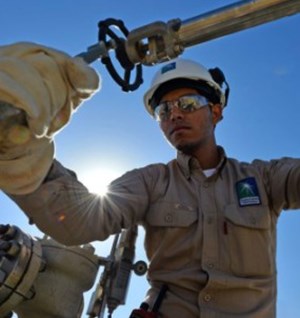CERAWeek: Upstream executives examine new strategies and models for the future
Amid oil prices rumbling to their highest levels in 14 years, E&P executives on the second afternoon of CERAWeek by S&P Global examined the methods they are likely to use, so their companies will excel in future years. In two separate sessions, it proved to be an enlightening exercise.
Looking toward The Energy Transition. In the first session, entitled “Upstream Strategies for the Energy Transition,” senior executives contrasted their current operations with what they think their firms will be doing by 2030 and beyond. In response to moderator Bob Fryklund’s (V.P., Upstream Energy, S&P Global) question about what 2030 will look like for his company, Saudi Aramco Executive Director for Strategy & Market Analysis, Ashraf Ghazzawi, said, “Well, certainly, Saudi Aramco’s vision for 2030 is no different from many of the energy companies operating nowadays. It is a strategy that essentially is informed within a context that has to do with energy transition. We, as a company, have an annual strategy development exercise that gets updated with macro events. If you look at what Saudi Aramco will look like by 2030, I would say that we will continue to be a preeminent energy company. We’re going to be a dominant player out there. But you will also see the company involved in diverting out of the oil production and into chemicals—that’s one major shift that will take place. You will also see that the company will be investing in a large variety of solutions that provide pathways to low-carbon business.
Ghazzawi went on to tell Fryklund and the audience that two areas where Saudi Aramco will work toward are carbon capture and storage, and hydrogen development. “I think it (hydrogen) will play a very prominent role,” explained Ghazzawi. “Hydrogen is a great pathway to our low-carbon business and our gas processing portfolio.” But the company will still work to grow its core oil and natural gas business, as well. Ghazzawi said that “we have declared that we will grow our maximum sustainable capacity to 13 MMbopd. That should be in place by the year 2027.” Looking at natural gas, Ghazzawi said, “there is going to be significant growth in gas processing for us, not only in convention but also unconventional resources.” He went on to describe how Saudi Aramco has “kick-started” the Jafurah unconventional gas development project, which is expected to bring 2.0 Bcfd of gas output by 2030.
Turning to plans for OMV Petrom, Fryklund asked the firm’s CEO and President of the Executive Board, Christina Verchere, about the unique role of her company in Romania’s oil and gas industry. “Romania has a very, very long history in the oil and gas industry,” noted Verchere. “The first well was drilled in Romania in 1857….the first refinery (in the country) was drilled in the mid-18th century. So, it’s a country that may not be on anybody’s radar screen, but it has a very deep history in the oil and gas industry.”
Verchere went on to say that “in its jurisdiction, OMV Petrom is very important. It is a fully integrated oil and gas company. It’s among the largest in southeast Europe. Producing about 130,000 bpd, it means that it provide about 35% to 50% of the crude demand and about 40% of the gas demand.” She also noted that OMV Petrom is the largest tax-paying company in Romania.
Asked by Fryklund about the future, Verchere said that by 2030, 70% of the company’s hydrocarbons will be natural gas, and that the gas is very important for Romania’s future. As part of the energy transition, OMV Petrom will be investing 35% of its capital into low-carbon operations. Vercher.e noted that “everyone in the industry that I have met has a deep commitment to the climate change agenda,” and her company has that same commitment.
Moving to the third and final panelist, Fryklund talked with Hajime Wakuda, president of Japan Oil, Gas and Metals National Corporation (JOGMEC). Wakuda said that his firm’s vision for 2030 is in line with Japan’s overall goal of being carbon-neutral by 2050. He noted that JOGMEC has established a special carbon-neutral division within its organization. “So, for a long time, we have been supporting oil, gas and minerals,” continued Wakuda, “but we will be supporting hydrogen in the future.” In addition, he mentioned that JOGMEC will “very much be exploiting geothermal as an energy source.”
Looking at his company’s operations over the near-to-medium term, Wakuda said, “There is still a need for investment in oil and gas for stability of energy supply. But we also need to pair that with carbon capture and storage and hydrogen development.”
Evolving to new operating models. Meanwhile, in the second session, “Evolving E&P Models & Opportunities,” Devon Energy Executive Vice President & Chief Corporate Development Officer, David Harris, said that his firm realized at a point a while back that existing operating methods weren’t working all that well. “Over the last 10 years, (the U.S. industry) rapidly grew our top-line production. It was really an all-costs business model that prioritized spending more than what you brought in,” explained Harris. “We found ourselves at a place where the returns on investment were unacceptable. So, we are now focusing on delivering the returns that our shareholders want. We will take the excess revenue that we generate and return it to our shareholders. It’s a very clear, transparent set of guidelines.
In a somewhat different way, Mustafa Sanali, Chairman of Libyan National Oil Corporation, said that his firm’s traditional way of doing business are no longer working, either. “The production-sharing contracts and concessions are not working so good for us anymore,” said Sanali. “The terms and conditions are no longer good for our firm. We must find a better way.”
Al Cook, Executive Vice President for International E&P at Equinor, said that “what we’re seeing from an industry view has been developing over the last 10 years.” Yet, he added, “our company motto is always high value, low carbon. We will focus on what we do offshore and what we do in partnerships onshore We are focused on maintaining valuable production, but we also want to reduce our absolute emissions 50% by 2050. As long as the world’s counties need fossil fuels, we want to do it in the most high-value, low-carbon way.”
Devon’s Harris said that “for us, the best thing we can do is continue to execute on the clear, transparent model that we’ve laid out. Yes, the U.S. grew oil production last year by 1.0 MMbpd, and we’re going to grow again this year.” But, he added, his firm and others are going to do it in a more responsible way.
Expounding on is theme of needing to change his firm’s basic business methods, NOC’s Sanali said, “The existing models are not sufficient, so our plan is to redefine these models , and we are open to all ideas. We have to do something inside Libya to change this (situation).” But, safe to say, he added, “Without our partners (from other countries), we couldn’t operate.”
“We are living in very volatile times,” said Equinor’s Cook, but he said that it’s important to keep an eye on the long-term goals. “We invest in Appalachia (in the U.S.), not because it will pay off in the next six months, but because (these projects) will be important in the next three to five years (to generate lasting profits).
On the environmental front, NOC’s Sanali said, “Our plan is going for ‘greening,” as I might say it. We want to produce more gas. We’re also going to construct a solar plant. In the northwest part of Libya, along the coast, we want to produce gas for LNG. Maybe, by 2040, we can reduce GHGs substantially and decarbonize.” He said that he has had discussion with multiple European firms on this subject.
Devon’s Harris noted the “mutual admiration” among the panelists and said, “I think we all have a lot in common. We have set very ambitious long-term targets for GHGs. This year, we’re (Devon) going to spend $100 million to lower our GHG and carbon levels.”
Summing up the subject, and the session, Equinor’s Cook said, “The difference between Europe and the U.S. is narrowing. If we are really going to make a difference as an industry,” it is to work with the NOCs, to increase production but also lower carbon.”





